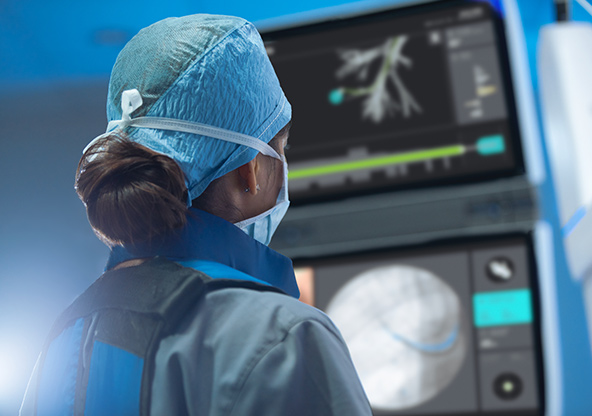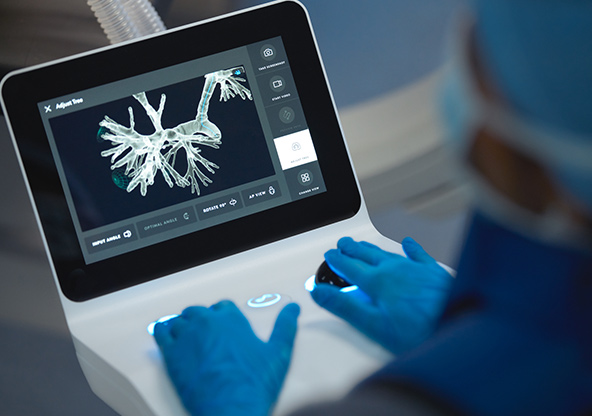Robotic-Assisted Bronchoscopy
What is Robotic-Assisted Bronchoscopy?
Bronchoscopy is a procedure that allows doctors to examine the lungs and air passages. It's usually performed by an interventional pulmonologist - a doctor specializing in lung disorders who also performs minimally invasive procedures. During a bronchoscopy, a thin, bendable tube, with a light and camera is passed through the nose or mouth, down the throat, and into the lungs.
Robotic-assisted bronchoscopy is a minimally invasive procedure to biopsy lung nodules and detects lung cancer and other diseases.
It has the same goal as traditional bronchoscopy, but instead of manually guiding a catheter through the patient's airways, the doctor uses a controller at a console to operate a robotic arm.
The robotic arm guides a thin, flexible, and maneuverable catheter equipped with a camera, light, and shape-sensing technology through the patient's airways to the target nodule.
How it Works
The robotic arm allows the doctor to maneuver the catheter more accurately through the patient's airways. This is particularly beneficial for reaching small or hard-to-reach nodules in the periphery of the lungs.
Doctors can get a more accurate diagnosis earlier, meaning that treatment for lung cancer and other lung diseases can start earlier. It is also less invasive than traditional bronchoscopy, leading to faster recovery and fewer complications.
Why Robotic-Assisted Bronchoscopy Might be Right for You
Here's why robotic-assisted bronchoscopy could be the best choice for you:
- Precise and Accurate: The robotic system allows your doctor to reach deeper within your lungs with greater precision. This increases the chances of obtaining a high-quality tissue sample for an accurate diagnosis.
- Comprehensive Evaluation: Combined with other techniques like endobronchial ultrasound, robotic-assisted bronchoscopy enables a thorough assessment of the lungs and surrounding lymph nodes.
- Early Detection: By reaching areas previously inaccessible with traditional methods, robotic-assisted bronchoscopy can identify lung cancer at its earliest stages, when treatment is most effective.
Conditions Treated
- Lung Cancer Diagnosis: Detecting and biopsying suspicious lung nodules or masses.
- Infection Diagnosis: Identifying and sampling areas of infection in the lungs.
- Treatment of Airway Obstructions: Removing blockages or foreign objects from the airways.
- Evaluation of Lung Diseases: Assessing and monitoring conditions like chronic obstructive pulmonary disease (COPD) or interstitial lung disease.
Who is Eligible?
Talk to your doctor about whether robotic-assisted bronchoscopy is right for you. It's a promising option for anyone needing a lung biopsy, especially those with nodules in hard-to-reach areas.


